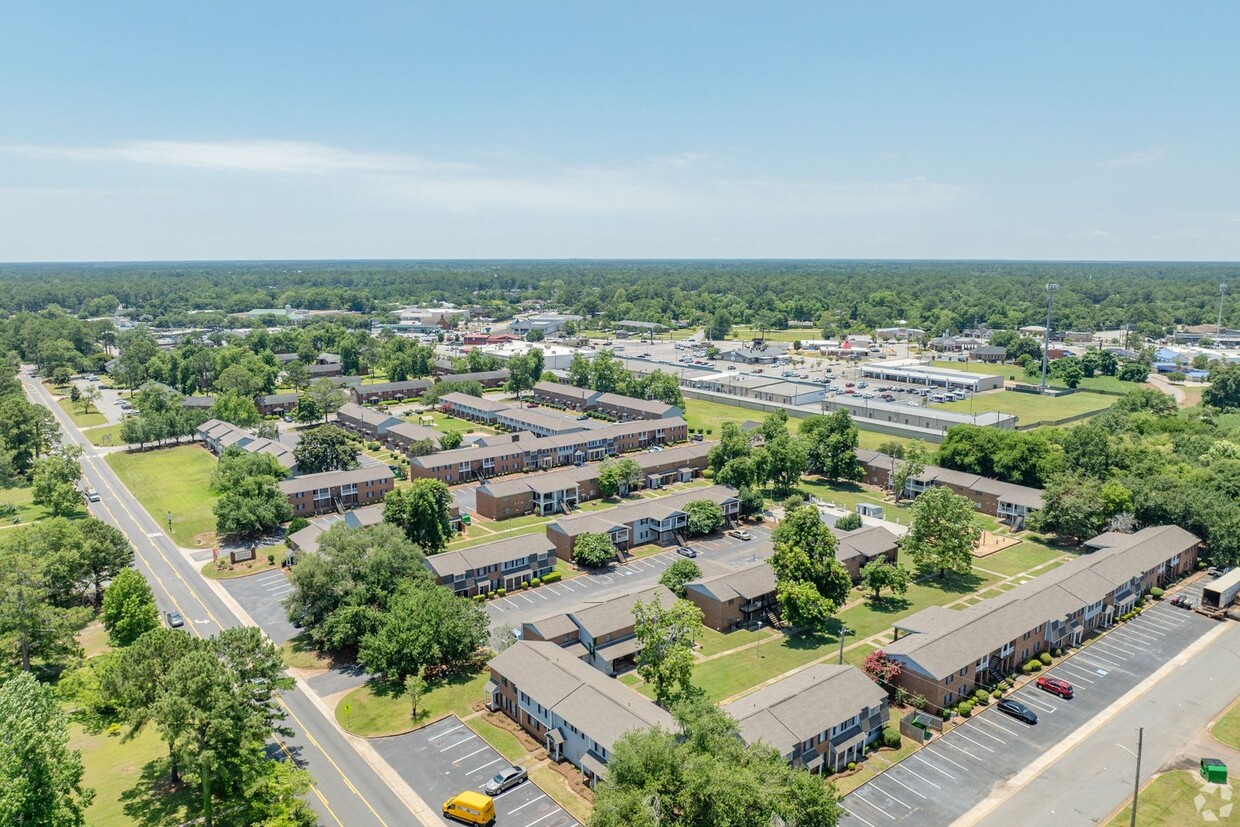Economic and Investment Outlook for the remainder of 2024
Will the U.S. experience a recession this year? In this article, we’ll explore the outlook for recession and how stocks, bonds, real estate, and other assets are expected to behave. We discuss how investors should be positioned in the remainder of 2024.
2024 Outlook Summary
- Economic Growth: Higher interest rates may result in a U.S. recession this year. However, if the recent moderation in inflation continues, this may give cover for the Federal Reserve to cut interest rates significantly and avoid a recession.
- U.S. Equities: The S&P 500 is somewhat expensive due to high valuations on the 10 largest companies. Other stocks appear reasonably valued, absent a recession. Higher interest rates and a slowing economy could result in a profit contraction, even without a recession, which could result in short-term stock declines. Therefore, continuing to emphasize a more defensive stock allocation is warranted.
- Fixed Income: U.S. interest rates are expected to stabilize and then perhaps decline. This makes most high-quality fixed-income investments attractive this year, the complete opposite from two years ago. Very short-duration and adjustable-rate fixed-income assets are attractive as they rapidly capture the benefit of rising interest rates. However, these interest rates will begin to decline as inflation risks moderate, and a pivot to longer-term high-quality assets becomes prudent. Credit-sensitive fixed-income assets continue to offer high yields, but if the risk of recession increases, then a pivot away from these is warranted.
- Real Estate: Single family residence prices have been resilient in the face of higher mortgage interest rates due to low housing inventory, strong employment, and wage growth. However, commercial properties, especially office buildings, are showing signs of stress with escalating mortgage defaults expected.
- Alternative investments: These still have a place in portfolios due to lower correlation and volatility when compared to stocks and traditional bonds. If a recession develops, these can outperform most other assets. Alternatives include hedged strategies and private non-traded investments. Mutual funds, ETFs, and hedge funds are all avenues for investing in this area.
Economies, Markets still at risk due to Geopolitical turmoil
Last year, we stated that “COVID-19 no longer appears a threat to global economic growth.” Fortunately, this turned out to be the case. This resulted in large improvements in supply chains, reducing inflation. It also resulted in high levels of consumer spending in entertainment, travel, and other services, which helped buoy employment and global growth.
Nonetheless, geopolitical risks have escalated further. Not only are commodity prices still distorted due to the Russian invasion of Ukraine, but the Israeli-Hamas conflict could worsen this both in terms of higher energy prices and costly disruptions to shipping lanes.
A polarized and split U.S. Congress means that very little legislation is expected—no material changes to income or corporate taxes, regulations, or new spending. However, a repeat of the debt ceiling impasse will likely result in additional political theatre brinksmanship. While we do not expect any major long-lasting damage from this, short-term stock and bond price gyrations are expected. A presidential election year is likely to accentuate uncertainty.
Conflicts are hard to predict in advance, but it is likely that additional destabilizing events will occur over the next few years. The retreat of globalization and the resurgence of nationalism continues. From an investment perspective, unexpected negative developments can hurt long-term investment returns if investors overreact, or they can be positive to long-term returns if investors adapt to new conditions and take advantage of temporary asset price dislocations.
Both CPI and the Personal Consumption Expenditures (PCE) decelerated over the prior 12 months to 3.1% and 2.6% respectively. Also, the trend is down and if this continues, the Federal Reserve (Fed) could cut interest rates in the last half of 2024, which will be beneficial to the economy and most asset classes.
Residential “shelter” costs (i.e., rents) account for about 40% of the core CPI. Because shelter costs are determined by a survey of renters and rents are typically increased only every 6-12 months, these CPI shelter costs often lag current rental conditions by 6 months or longer. Stripping out this lagged component of the CPI gives a truer picture of what is happening currently with inflation. The Fed also pays particular attention to this Core CPI, ex-shelter inflation component for the same reasons mentioned above. Current monthly rental trends show that rent increases have come down rapidly this year. The trend is slightly negative now (yellow line), though seasonal factors account for some of this. Year-over-year, monthly rents have increased only 3.3%, which is well under the 6.5% lagged Shelter CPI cost component over the same 12 months. U.S. rental vacancy rates have increased to 6.6%, up over 1% from the 2022 lows.
The increasing vacancy trend suggests future weakness in residential rental costs. For example, if rents only go up 2% this coming 12 months, then we could see the Core CPI, including shelter costs rise by a modest 2.6%. This would still be higher than the Fed’s 2% target inflation rate, so other components of inflation (food, energy, other service costs) or rents might need to decelerate further before the Fed declares victory and starts cutting interest rates.
The PCE inflation measure puts less emphasis on shelter costs (about half), and includes certain costs that the CPI does not include. It more quickly reflects what consumers are actually buying, so the PCE is somewhat preferred by the Fed over the CPI. As mentioned earlier, the PCE inflation the last 12 months was 2.6% and declining rapidly. It is probable that PCE inflation will drop to 2% before the CPI does. To the extent that the Fed acknowledges this, they can begin to cut interest rates sooner rather than later.
Interest Rates and Recession Outlook
The U.S. Federal Reserve began an aggressive series of interest rate increases starting in March 2022 in order to quell inflation. The Fed has raised the upper end of its Fed Funds interest rate target from 0.25% to 5.5%. However, it has not increased interest rates the last few months, when it could have. The Fed also suggested that they could begin cutting rates in late 2024, if inflation continues to moderate, as it has been recently.
Historical evidence indicates that a recession is highly likely within 18-24 months however, a recession has not yet occurred and other factors make historical comparisons less reliable. One reason why a recession may not occur is because the unemployment rate may not rise as it did in the past after a series of large interest rate increases.
It is possible that some election-year stimulus will offset slowing growth, though it will be hard to get a split Congress to go along with any significant increase in stimulus spending.
If the Federal Reserve begins to cut interest rates in the second half of 2024 and continues aggressively lowering interest rates, then the loosening of monetary conditions may create enough business and consumer confidence to avoid a recession. However, the Fed has not been forecasting early or deep interest rate cuts in 2024, and so far the Fed has been pretty consistent in following their earlier guidance. So while the Fed may take steps to help avoid a recession, we should not count on this.
Over the next 6 months, we expect that forthcoming data regarding labor, jobs, wage and inflation will be critical in determining if a recession is more likely than not.
If a recession develops, it is not likely to be too long or deep. Most households and businesses are in reasonably good shape to weather a typical recession. Household debt payments as a percentage of disposable current income was much higher in 2007 and most earlier time periods, per the left graph (JP Morgan Guide to the markets).
Home prices are holding firm despite higher interest rates as the inventory of homes available for sale is very low. Therefore, the inability to service debt on a large scale and resulting asset liquidations at distressed prices as experienced in 2000-02 and 2008-09 is not likely to occur this time around. A recession will result in higher loan delinquencies, but lenders (including banks) should have ample reserves to get through this, with the exception of a few undercapitalized lenders and those with significant exposure to the riskiest assets (e.g. office building loans).
As any forthcoming recession will likely result in bump in unemployment and a decline in wage increases and inflation, the Fed can begin to cut interest rates at that time and quickly reverse the recessionary damage to the economy. This would be similar to the April to November 2001 recession. This lasted only 8 months, and the economy (GDP) only fell 0.3%. Other than the dot.com asset price bubble bursting, which had begun a year earlier, there was not significant and long lasting asset price and employment distress.
So whether we barely avoid a recession or experience a shallow recession is hardly going to make much difference in the longer run. If we look forward about 24 months to 2026, past any recession event, we don’t expect the economy to look much different than it does now, other than lower interest rates and inflation, which will be good things. Wage growth may have slowed, and the unemployment rate could be somewhat higher than now, but otherwise not out of the ordinary.
As to the rest of the world, economic trends and risks are pretty similar to the U.S., as Covid-related issues and responses were global and not limited to the U.S. Inflation was higher in some regions and lower in others, but the trends were and are the same. The risk of recession is higher in Europe, lower in Japan, and a mix within emerging economies. This does affect how assets should be allocated.
Investment Implications for U.S. Stocks in the remainder of 2024
Looking back to the last couple of years, stocks appeared to be pricing in a recession for much of 2022 and again in 2023. While no recession occurred those years, fear of recession resulted in large price movements in global stocks and bonds. We expect fear of recession to continue to result in price volatility in 2024, regardless if a recession occurred.
U.S. stock appear somewhat expensive again, as the S&P 500 is trading at 19.5 times forward earnings, as shown in the next chart and graph. The other times that the S&P has traded close to or above 20 time earnings, the S&P 500 experienced significant declines (2000, 2020, 2022).
Historically, when the S&P 500 has been valued close to 19.5 times earnings, like now, the average annualized return 5 years hence has been close to 5% (red square on graph to the left, JP Morgan Guide to the Markets). When priced over 22 times, 5-year returns have been flat or negative. When priced at 11 to 14 times earnings, returns have averaged over 10%/year. So the current valuation suggest a positive, but below-average S&P 500 return over the next 5 years.
Fixed Income: Fixed income assets now offer reasonable yields, unlike two years ago. In order to fight inflation, most central banks have raised interest rates and reversed many stimulus measures. Both short-term and long-term interest rates rose significantly. However, by the fourth quarter of 2023, longer-term interest rates declined modestly, in line with quickly declining rates of inflation. This resulted in positive 2023 total returns to most fixed income asset, both in the U.S. and overseas.
The U.S. Treasury securities index had a year-end yield of 4.1%, considerably higher than the 10-year average of 1.7%. Assuming inflation rates continue to subside, we would expect Treasury rates to trend down as well. A recession would be expected to also result in lower interest rates. So either way, we expect long-term Treasury yields to decline. Therefore, it is increasingly attractive to extend maturities in fixed income assets to lock-in these still high interest rates.
Investment grade corporates offer a higher yield at 5.1%, though a recession could send yields higher (prices down) for a period of time. High yield bonds offer a 7.6% yield, but could suffer considerably in a recession. The same can be said of leveraged loans, though the current yield of 10.6% could absorb considerable default risk. However, banks loans have floating interest rates that could quickly decline when the Fed starts cutting rates.
Emerging markets dollar-denominated bonds offer an attractive 7.8% yield, well above their 10-year average yield of 5.7%. Being dollar-denominated, if U.S. yields come down and prices rise, then high-quality dollar-denominated emerging markets bonds should follow.
Short-term money markets and T-bills—not shown above—with close to 5% yields and with little or no price risk, remain attractive, at least until the Fed cuts short-term interest rates.
A mix of these fixed income assets is recommended—different types, different maturities, and different quality types. Extending maturities this year and reducing credit risk is also recommended. If a recession develops, credit sensitive fixed income can be added at lower prices (higher yields) than currently.
Real estate: Residential single-family real estate prices surged during the pandemic as work-at-home and movement from high-density to more affordable lower-density locations took place. Mortgage rates plunged as the Fed’s stimulative policies assisted buyers. Lower interest rates in 2020 and 2021 absorbed some of the effects of higher real estate prices. However, mortgage rates rose in 2022, hitting 7.7% in October 2023, causing home affordability to plunge (see next table showing mortgage rates, other factors and the overall U.S. home affordability index).
Supply of housing available for sale also declined. Builders reduced their inventory, and existing homes were less available for sale as current owners did not want to give up their low mortgage rates. Therefore, qualified willing buyers, which declined in 2023 were more than offset by a relative lack of supply of homes for sale. A strong employment market, including higher inflation driven wages, was sufficient to keep housing prices rising in 2023.
As mentioned earlier, wage growth is cooling off and unemployment could rise in the later part of 2024. However, mortgage interest rates have recently declined by a full percentage point, and it is likely that they will decline further if inflation also moderates. If a recession occurs, then mortgage defaults are expected to rise, but defaults and distressed home sales should remain low enough not to trigger another housing debacle as occurred in the 2007-2010 period.
The same cannot be said for some commercial properties. Most commercial properties are financed with interest-only loans. If property prices decline, then some loans cannot be refinanced when the loans come due. Per Tripp, Inc., a mortgage data provider, about $1 trillion of commercial property loans are coming due in each of the years 2024 and 2025. Even if they can refinance, commercial property mortgage interest rates are much higher than when the mortgages were originated. Many commercial mortgages also are variable-rate, which has been squeezing profit margins of commercial property owners. It is projected that default rates will increase for the next 2 years.
Multi-family, the largest property sector is projected to show a near-doubling of defaults, though still under 2%. However, office building loan defaults are expected to rise from over 3% now to close to 10% in 2025. The work-at-home trend did not disappear post-Covid, resulting in increased office vacancy rates as tenants downsized their space needs. As current leases expire, this downsizing trend is expected to continue. Lower rental revenue also means lower property values and an inability to refinance or afford higher loan payments on variable-rate mortgages.
Commercial Edge estimates that $150 billion of office building loans are coming due in 2024 and about an equal amount in the 2025-2026 period. If 9% of these loans become delinquent in the next 2 years, this translates to just under $30 billion of mortgages and forced office building liquidations. This is small enough not to create much distress to the overall economy, but regional banks may be hit hard. Regional banks make about 50% of commercial property loans, with pensions, insurance firms and a few others making up the balance. Therefore, some of these regional banks may face difficulty in the coming years. However, a few failed regional banks are unlikely to trigger a wider financial contagion, as the “too big to fail” banks have much less relative exposure to office mortgages and have strong balance sheets. Moreover, the Federal Reserve will provide liquidity and financial backstops to these large banks to prevent another 2008-style financial crisis.
While industrial, retail and apartment properties still have strong operating fundamentals, it would not be surprising to see some financial stress develop due to higher mortgage rates. It is hard to see much price appreciation from most commercial properties in this type of environment, at least not until mortgage interest rates drop significantly.
Conclusion
Volatility is expected to remain high for stocks, with some stock sectors experiencing positive returns in 2024, with others struggling, particularly if a recession is brewing later this year or early next year. The 3-5 year outlook is better since this would include any post-recession recovery. For the remainder of 2024, a somewhat defensive posture is warranted. Long-term higher-quality bonds have become more attractive, while lower quality high-yield bonds and bank loans may be facing several headwinds. Short-term and variable-rate, high-quality fixed-income investments are currently very attractive due to high yields and low risks. Alternative and hedge fund-like assets may provide reasonable returns and offer diversification from traditional stocks and bonds.
Solutions are closer than we think
We know that there are a slew of options and programs available to incentivize investors putting money into different funds, however we feel that Real Estate is the safest investment in the world. We understand that Investors don’t have to jeopardize their returns or earnings in different forms of high risk investments.
We live it and breath the industry – at SIMM Capital our strategy is to give everyone the chance to build wealth through real estate. We seek the best assets that hold the largest opportunities while delivering in rent growth year over year. We know the business. To see how we can help you with your Real Estate investments talk to an expert and click the link www.simminc.com




Recent comments